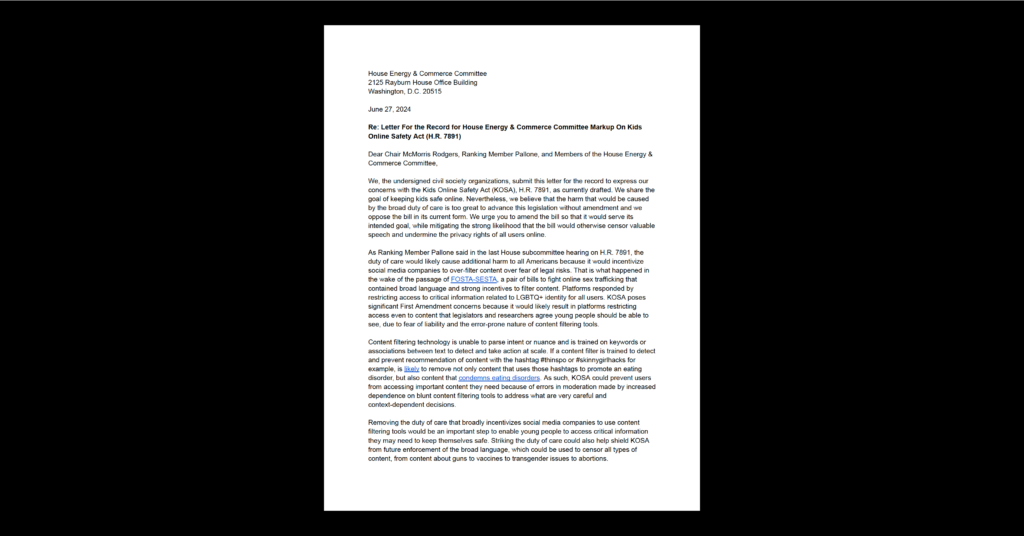Equity in Civic Technology, Privacy & Data
CDT Tech Tales: Advancing Equitable Internet Access in Connecticut
This post is part of CDT’s storytelling series on EdTech use and student privacy protection during COVID-19. Our experts have spoken with parents, teachers, district leaders, and state officials about how they’ve managed the transition to virtual learning (and in some cases the return of in-person instruction), leveraging data and technology and protecting the civil rights of students along the way. Check out the rest of the stories here.
“Even when the pandemic ends, equitable access to internet and technology is still going to be critical.”
Doug Casey
Doug Casey, Executive Director of the Connecticut Commission for Educational Technology, knows that with students learning from home this year, the relationship between teachers and parents is more important than ever before. Engaged parents can play a critical role in helping their children access and use the technology necessary to facilitate remote learning, and education agencies such as Casey’s can help support them in this.
“We encourage teachers to communicate frequently with parents, to enlist them as partners in learning,” he told CDT. “Since the shift to remote learning, parents have seen firsthand what their students’ education is like, what their technology is like, because it is right in front of them as they help their children with schoolwork.”
The challenges of managing one’s children’s virtual learning and childcare while also trying to work from home can be daunting, as has been well-documented. Casey says more parents are getting involved in their children’s education than in previous years due to these unprecedented circumstances.
But some parents are unable to engage fully, given their own lack of digital skills and experience, as well as concerns about privacy. While working to provide every student with a computer and Internet connectivity this spring through Governor Ned Lamont’s Everybody Learns initiative, Casey and his partners from other state agencies found that many parents did not accept the free cable Internet offered by third-party providers.
“We were struggling with why parents weren’t taking advantage of free Internet access, especially,” said Casey. Through focus group research and one-on-one discussions, he and his team soon discovered some of the obstacles preventing these parents from engaging with their students and teachers in the digital classroom.
Their results showed that some parents faced barriers that prevented them from fully understanding the offer initially, despite information being available in multiple languages. Others had previous negative experiences with cable companies. Some parents, including undocumented individuals, did not want to share information with third-party services.
In addition to cable Internet connections, the initiative provided nearly 13,000 cellular hotspots — which offer connectivity through the same cellular technology used in cellphones — for school districts to distribute to students. The intent of purchasing these devices was to address the needs of highly mobile students, such as those in joint custody situations. Use of hotspots also helps to connect students whose parents do not want to use the free cable Internet services offered by the state.
As more and more students and families are brought online to participate in remote learning, Casey recognizes the importance of keeping them safe once they get there. “As digital learning evolves, the need for balanced privacy approaches grows,” he states.
To support schools in meeting their privacy obligations, Casey created the Connecticut Student Data Privacy Pledge. For nearly four years, education technology companies have been able to sign the pledge to affirm that they comply with the state’s data privacy laws. Districts can bypass the process of creating individual contracts with technology vendors by working with companies who have signed the Pledge. This makes it easier for teachers to know which digital tools to use, and ensures student data will be protected during virtual learning.
As Casey looks towards another spring of online learning, he’s proud of how far his state has come with protecting student data and ensuring equitable access to technology for all students. Thanks to Governor Lamont’s commitment to funding technology, the state was able to close the device gap. But Casey recognizes the work ahead that’s still needed to ensure every student is set up to succeed virtually, from a connectivity as well as a digital literacy and safety standpoint.
“Even when the pandemic ends, equitable access to internet and technology is still going to be critical,” Casey told CDT. “We’re establishing a foundation now so we can deliver better education in years to come.”
In order to provide education leaders and policymakers with guidance towards making equitable decisions about student privacy, CDT recently released a report titled “Protecting Students’ Privacy and Advancing Digital Equity.” Based on original research, the report recommends prioritizing privacy-focused teacher training and proactively communicating with parents about how schools are protecting their children’s data.
Read additional stories in this student privacy series here.


